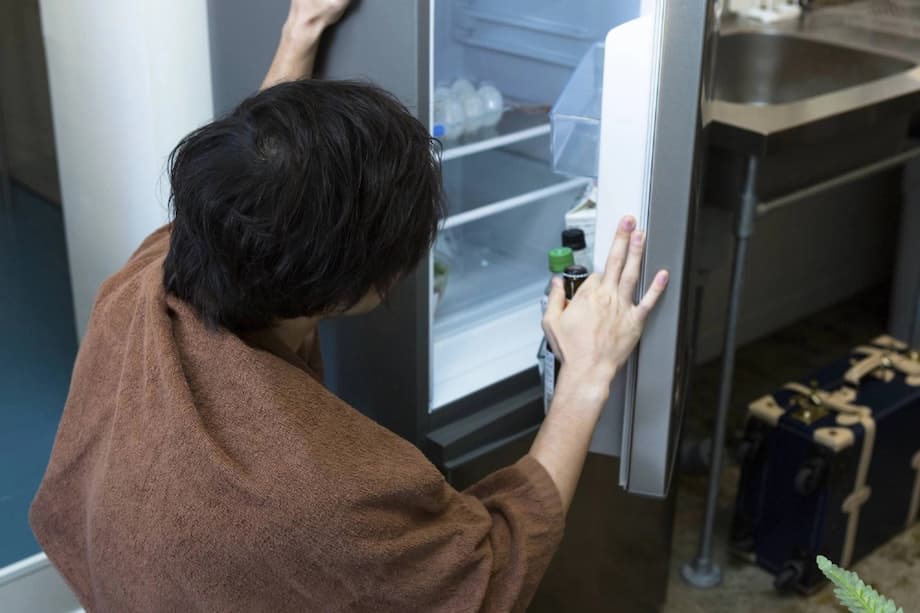Inflation squeezes student aid in Japan
Rising prices are tightening the grip on students who rely on scholarships in Japan. An online survey by the Osaka based nonprofit DxP found that 91 percent of respondents who receive grant type scholarships and who also seek food aid from the Japan Student Services Organization reported that their livelihoods have worsened amid inflation. Nearly one in five described their situation as dire, and none said their household budget had improved. The picture that emerges is of students cutting back on meals, worrying about rent, and hesitating to work more hours because it could hurt their grades and progress toward graduation.
- Inflation squeezes student aid in Japan
- What the DxP survey reveals
- Rising costs for food, housing, and daily life
- Why scholarships are not keeping up
- Student loans, debt and mental health
- Who is most at risk
- Balancing work and study under pressure
- Policy ideas on the table
- How Japan funds higher education and how it compares
- What universities and local groups can do now
- Key Points
The poll, conducted July 1 to 25 among 354 people aged 18 to 25, highlights how quickly everyday costs are outpacing fixed support allowances. Most respondents said food costs have jumped, with 65.5 percent reporting an increase and 10.2 percent saying costs increased a lot. A majority, 56.5 percent, expressed dissatisfaction with their daily meals, a sign that rising grocery and cafeteria prices are making balanced nutrition harder to maintain. The survey captured accounts of students skipping meals to keep up with rent and utilities, a tradeoff that can undermine both health and academic performance.
DxP head Noriaki Imai urged policymakers to act. He called for immediate emergency aid for students in need and for medium term reform that ties scholarship amounts to inflation so that support keeps pace with living costs. The appeal reflects a wider challenge. Inflation in Japan has been driven in part by a weaker yen and higher import costs, with staples and energy under pressure. Even modest price rises can quickly erode the buying power of fixed stipends, especially for students who already live on thin margins.
What the DxP survey reveals
The respondents share a distinctive profile. All are receiving grant type scholarships and also seek food aid from JASSO, the national agency that administers much of Japan’s student support, including loans, grants and programs that assist with basic needs. This group sits at the sharp edge of cost pressure because they already qualified for need based help before the latest round of price increases.
Looking beyond the headline figures, the responses convey a pattern of constrained choices. Students describe limits on part time work because extra shifts could derail attendance, lab time or study hours. Many also face fixed obligations, such as rent and commuting costs, that leave little room to absorb higher food prices. The sample size is modest and drawn from a population already identified as financially vulnerable, yet the signals align with reports from campus support centers and local food banks that more students are requesting help with groceries.
Rising costs for food, housing, and daily life
Food stands out as the most immediate pain point. Groceries, prepared meals and convenience store items have seen steady price increases. Students often rely on low cost staples, canteens and convenience stores to stretch budgets. That approach works when prices are stable, but it becomes difficult when the price of rice, noodles, bread, meat and dairy inches higher at the same time. If a student also faces higher electricity or gas bills, the small buffers that used to absorb bumps disappear.
Housing adds pressure. University areas in major cities remain expensive, and even shared apartments and student housing can carry rents that dominate a monthly budget. Some students take longer commutes from cheaper neighborhoods, trading time and transport costs for lower rent. Others cannot easily move because of lease terms or proximity to labs, clinics or teaching practicums. When rent is due, there is little flexibility, so students cut back elsewhere, which often means skipping or shrinking meals.
Why scholarships are not keeping up
Japan’s student aid mix relies heavily on programs administered by JASSO. These include loans without interest and loans with interest, along with grant programs that target students from lower income families. Grants help reduce borrowing, but their amounts are typically fixed for the year and do not automatically adjust when the consumer price level rises. Many scholarships from universities and local foundations function the same way, with set monthly amounts and limited midyear changes.
Inflation reduces what a fixed stipend can buy. A student whose grant covered a balanced set of groceries at the start of the year can find it falls short by the spring term. Budget cycles also matter. Allowance amounts are often set well before the academic year begins, while prices in stores change monthly. This mismatch leaves students to absorb the difference or to look for emergency aid when costs unexpectedly surge.
Student loans, debt and mental health
Japan expanded student loans over the past two decades as tuition rose and household incomes stagnated. Research on student debt and health in Japan points to a link between loan burdens and psychological distress after graduation. A large cross sectional study in 2017, covering more than four thousand young adults, found that graduates with student loan debt were more likely to report severe psychological distress, even after adjusting for background factors. For current students, the study did not find a clear association, which the authors suggested might reflect the fact that repayment begins only after school.
JASSO loans generally enter repayment seven months after graduation, with periods that can extend up to 20 years. For graduates who face weak entry level wages or unstable hours, repayment can be difficult because monthly obligations are fixed and do not adjust with income in a flexible way. When inflation also raises living costs, the strain can intensify. This context helps explain why the prospect of adding more part time hours now feels risky to many current students. They are balancing the need to cover today’s bills against the danger of delayed graduation and heavier debt later.
Who is most at risk
Students from low income households and those without parental support are the most exposed when allowances fail to keep pace with prices. First generation university students, single parent households and students who send part of their earnings home can struggle to absorb even small increases in rent, food and utilities. International students face added challenges when exchange rate swings reduce the value of support from family abroad.
Students with disabilities, chronic health conditions or caregiving obligations have fewer options to extend work hours. The time required for commute, medical appointments or family tasks limits their capacity to close budget gaps through additional part time work. When basic costs rise, these students have even less room to maneuver, and their risk of food insecurity grows.
Balancing work and study under pressure
Japanese students often hold part time jobs, but the decision to add shifts is never simple. Extra income can help with immediate needs, yet it may reduce time for lectures, seminars and labs. It can also lower study time for exams or language proficiency tests, which can affect scholarships tied to academic performance. For students in fields that require clinical rotations or teaching practicums, schedules leave little spare capacity.
Food insecurity complicates the picture. Skipping meals can impair concentration, mood and memory, which makes it harder to study efficiently. If students also lose sleep to pick up late shifts, their performance can suffer in a way that threatens the very goal of finishing on time. The DxP findings that some respondents are skipping meals to pay rent and avoiding more work hours to protect their studies show how thin the margin of error has become.
Policy ideas on the table
DxP has urged the government to provide emergency financial support now and to tie scholarship amounts to inflation in the medium term. There is also a wider discussion about improving the balance between grants and loans, and about the design of repayment plans that better reflect graduates’ ability to pay in the early career years.
What an inflation index could do
Indexing aid to a price benchmark such as the consumer price index would help ensure that a grant’s purchasing power stays stable over time. Policymakers could set a baseline at the start of the academic year and adjust the monthly stipend if the index crosses a threshold. Guardrails can limit volatility, for example by capping midyear adjustments or using a moving average. Even a modest index can prevent the quiet erosion of support that students have experienced as prices rise.
Income contingent repayment and stronger grants
Academic research has examined ways to reduce hardship through repayment reform. A body of work on Japan’s loan system argues that a broad income contingent repayment scheme could protect graduates in low earnings years. Under income contingent models, payments rise and fall with income, which can reduce defaults and distress without large long run costs for taxpayers. Japan currently has a partial income contingent option, but experts note that broader coverage and simpler rules would improve access and affordability. The design should take account of the Japanese labor market, including the large gender wage gap among married women. Expanded use of grants for students from lower income families would also reduce the need to borrow in the first place.
How Japan funds higher education and how it compares
Japan’s higher education system has relied heavily on household contributions. Research on financing trends shows that tuition has increased while many household incomes have been flat. Families traditionally shoulder a large share of costs, and student loans expanded to sustain enrollment as this model came under strain. That shift brought more young people into higher education, yet it also spread repayment burdens into the years after graduation.
Other advanced economies often mix larger grant aid with income based loan repayment, which spreads the risk of low early career earnings across time. Japan has begun moving in that direction with targeted grants and a partial income contingent loan option, but coverage remains incomplete. The DxP survey indicates that even those who receive grants can face food insecurity when prices rise, a signal that benefit levels and adjustment mechanisms need review.
What universities and local groups can do now
Universities and local partners can ease pressure while national policy evolves. Steps include expanding emergency grants, meal voucher programs and campus food pantries, and offering short form applications that deliver small cash aid quickly. Universities can also increase the number of paid campus roles with flexible scheduling, so students can work between classes without long commutes.
Student support offices can coordinate with municipalities and nonprofits to connect students to rent assistance, utility support, counseling and legal advice for debt issues. Clear communication about available aid, presented at orientation and reinforced during exam periods, helps students ask for help before problems escalate. The goal is to stabilize health and study time so that students can complete their programs on schedule.
Key Points
- DxP surveyed 354 scholarship recipients aged 18 to 25 in July, and 91 percent said inflation has made their livelihoods worse.
- Nearly 20 percent described their situation as dire, and none reported a higher household budget.
- Food costs rose for 65.5 percent of respondents, with 10.2 percent saying costs rose a lot, and 56.5 percent were unhappy with daily meals.
- Students reported skipping meals to pay rent and avoiding extra part time work to protect their studies.
- Grant amounts generally do not adjust with inflation, which erodes purchasing power during the year.
- Research in Japan links student loan debt with higher psychological distress among graduates, underscoring the need for better repayment design.
- Experts point to broader income contingent repayment and stronger grants as policy options, alongside inflation indexing of aid.
- Universities can expand emergency aid, meal support and on campus jobs while national reforms are considered.




